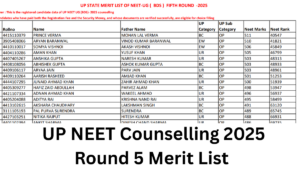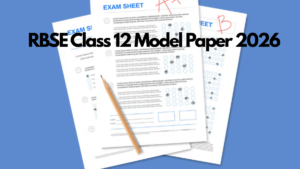Adda247 provides NCERT Solutions for Class 12 Biology, Chapter 5, which are aimed to assist students succeed in their studies and exams. These solutions are created by subject matter experts who follow NCERT Class 12 biology rules and use simple, student-friendly language. They form a solid foundation for understanding the material. The NCERT Class 12 Biology solutions cover every chapter and provide extensive answers to important questions.
NCERT Solutions for Class 12 Biology Chapter 5 – Molecular basis of inheritance
The chapter provides information about Molecular basis of inheritance. DNA is a long polymer of deoxyribonucleotides. The length of DNA is usually defined as number of nucleotides (or a pair of nucleotide referred to as base pairs) present in it. DNA is an acidic substance in the nucleus. It was first identified by Friedrich Meischer in 1869. He named it as ‘Nuclein” In 1953 double helix structure of DNA was given by James Watson and Francis Crick, based on X-ray diffraction data produced Maurice Wilkins and Rosalind Franklin.
Important Questions of Ncert Solutions Class 12 Biology chapter 5: Molecular Basis of Inheritance
Question 1. Group the following as nitrogenous bases and nucleosides:
Adenine, Cytidine, Thymine, Guanosine, Uracil, and Cytosine.
Answer: DNA is a polymer of nucleotides that are made up of sugar, a nitrogenous base and a phosphate moiety. DNA has four bases; two purines and two pyrimidines. The two purines are namely adenine and guanine and two pyrimidines are cytosine, thymine. A nucleotide unit without phosphate group is called nucleoside. Nitrogenous bases = Adenine, thymine, uracil and cytosine. Cytidine and Guanosine are the nucleosides.
Question 2. If a double stranded DNA has 20 per cent of cytosine, calculate the percent of adenine in the DNA.
Answer: In a DNA molecule, the number of cytosine molecules is equal to guanine molecules and the number of adenine molecules is equal to thymine molecules. Thus, if a double-stranded DNA has 20% cytosine, it has 20% guanine. Thus, C + G makes 40% of the total bases. The remaining 60% includes both adenine and thymine which are in equal amounts. So, the percentage of adenine is 30%.
Question 3. If the sequence of one strand of DNA is written as follows:
5′ -ATGCATGCATGCATGCATGCATGCATGC-3′
Write down the sequence of complementary strand in 5’→3′ direction.
Answer: DNA is a two-stranded molecule. Each strand is a polynucleotide composed of A(adenosine), T (thymidine), C (cytidine), and G (guanosine) residues polymerized by “dehydration” synthesis in linear chains with specific sequences. Each strand has polarity which runs from 5′ to 3′.
In DNA, A pirs with T and G pairs with C.
Fo through the original 5′ to 3′ sequence pairing each A with T ad each C wth G.
While RNA is a single strand molecule. This Strand also consists polynucleotide composed A, C, G and U (uridine).
For a complementary strand replace A with U (because RNA does not consist T), T with A,
C with G, and G with C.
Therefore, if the sequence of one strand of DNA is written as:
5′ -ATGCATGCATGCATGCATGCATGCATGC-3′
The sequence of the complementary strand in 3′ -> 5′ is as follows:
3′ – TACGTACGTACGTACGTACGTACGTACG – 5′
Subsequently, sequence of complementary strand in 5’→3′ direction is written as:
5′ – GCATGCATGCATGCATGCATGCATGCAT – 3′
Question 4. If the sequence of the coding strand in a transcription unit is written as follows:
5′ -ATGCATGCATGCATGCATGCATGCATGC-3′
Write down the sequence of mRNA.
Answer:
If the coding strand in a transcription unit is 5ʹ-ATGCATGCATGCATGCATGCATGCATGC-3ʹ
Then, the template strand in 3 ‘to 5’ direction would be
3ʹ-TACGTACGTACGTACGTACGTACGTACG-5ʹ
It is known that the sequence of mRNA is same as the coding strand of DNA. However, in RNA, thymine is replaced by uracil.
Hence, the sequence of mRNA will be
5ʹ-AUGCAUGCAUGCAUGCAUGCAUGCAUGC-3ʹ
Question 5. Which property of DNA double helix led Watson and Crick to hypothesise semi-conservative mode of DNA replication? Explain.
Answer: Watson and Crick observed that the two strands of DNA are anti-parallel and complementary to each other with respect to their base sequences. This type of arrangement in DNA molecule led to the hypothesis that DNA replication is semiconservative. It means that the double-stranded DNA molecule separates and then, each of the separated strand acts as a template for the synthesis of a new complementary strand. As a result, each DNA molecule would have one parental strand and a newly synthesized daughter strand. Since only one parental strand is conserved in each daughter molecule, it is known as semi-conservative mode of replication.
Question 6. Depending upon the chemical nature of the template (DNA or RNA) and the nature of nucleic acids synthesized from it (DNA or RNA), list the types of nucleic acid polymerases.
Answer: There are two types of nucleic acid polymerases:
- DNA-dependent DNA polymerase
- DNA-dependent RNA polymerase
DNA-dependent DNA polymerase use a DNA template to synthesize a new DNA strand and DNA-dependent RNA polymerase use a DNA template to synthesize a new RNA strand.
Question 7. How did Hershey and Chase differentiate between DNA and protein in their experiment while proving that DNA is the genetic material?
Answer: Hershey and Chase grew some bacteriophages on a medium containing radioactive phosphorus (32P) to identify DNA and some on a medium containing radioactive sulphur (35S) to identify protein. Then these radioactive-labelled phages were allowed to infect E. coli bacteria subjected to the process of centrifugation.
It gave an idea that DNA acted as hereditary material which was transmitted from bacteriophage to bacteria. Bacteria which were infected with bacteriophages had radioactive proteins.
Question 8. Differentiate between the following:
(a) Repetitive DNA and Satellite DNA
(b) mRNA and tRNA
(c) Template strand and Coding strand
Answer: (a) Repetitive DNA and satellite DNA
| Repetitive DNA | Satellite DNA | |
| Repetitive DNA are DNA sequences that contain small segments, which are repeated many times. | Satellite DNA are DNA sequences that contain highly repetitive DNA. | |
(b) mRNA and tRNA
| mRNA | tRNA |
| mRNA or messenger RNA acts as a template for the process of transcription. | tRNA or transfer RNA acts as an adaptor molecule that carries a specific amino acid to mRNA for the synthesis of polypeptide. |
| It is a linear molecule. | It has clover leaf shape. |
(c) Template strand and coding strand
| Template strand | Coding strand |
| Template strand of DNA acts as a template for the synthesis of mRNA during transcription. | Coding strand is a sequence of DNA that has the same base sequence as that of mRNA (except thymine that is replaced by uracil in DNA). |
| It runs from 3’ to 5’. | It runs from 5’to 3’. |
Question 9. List two essential roles of ribosome during translation.
Answer: The important functions of ribosome during translation are as follows.
Ribosome acts as the site where protein synthesis takes place from individual amino acids. It is made up of two subunits.
The smaller subunit comes in contact with mRNA and forms a protein synthesizing complex whereas the larger subunit acts as an amino acid binding site.
Ribosome acts as a catalyst for forming peptide bond. For example, 23s r-RNA in bacteria acts as a ribozyme.
Question 10. In the medium where E. coli was growing, lactose was added, which induced the lac operon. Then, why does lac operon shut down some time after addition of lactose in the medium?
Answer: Inducer is a chemical (substrate, hormone or some other metabolite) which after coming in contact with the repressor, changes the latter into non-DNA binding state so as to free the operator gene. The inducer for lac-operon of Escherichia coli is lactose (actually allolactose, or metabolite of lactose). RNA polymerase is recognized by promoter gene. It passes over the freed operator gene and then catalyses transcription of mRNAs over the structural genes. The mRNA pass into the cytoplasm and form particular proteins or enzymes. Out of the three enzymes produced by lac-operon, permease is meant for bringing lactose inside the cell. galactosidase ( = lactase) breaks lactose into two components, glucose and galactose. The enzyme like lactase or galactosidase which is formed in response to the presence of its substrate is often called inducible enzyme. Inducible operon systems generally occur in catabolic pathways. The lac-operon will not, however, remain operative indefinitely despite presence of lactose in the external environment. It will stop its activity with the accumulation of glucose and galactose in the cell beyond the capacity of the bacterium for their metabolism.
| NCERT Solutions for Class 12 Biology Chapter-wise |
|
Chapter 1: Sexual Reproduction in Flowering Plants
|
|
Chapter 2: Human Reproduction
|
|
Chapter 3: Reproductive Health
|
|
Chapter 4: Principles of Inheritance and Variation
|
|
Chapter 5: Molecular Basis of Inheritance
|
|
Chapter 6: Evolution
|
|
Chapter 7: Human Health and Disease
|
|
Chapter 8: Microbes in Human Welfare
|
|
Chapter 9 : Biotechnology: Principles and Processes
|
|
Chapter 10: Biotechnology and its Applications
|
|
Chapter 11: Organisms and Populations
|
|
Chapter 12: Ecosystem
|
|
Chapter 13: Biodiversity and Conservation
|









 UP NEET Counselling 2025 Round 5 Merit L...
UP NEET Counselling 2025 Round 5 Merit L...
 RBSE Class 10 Model Paper 2026 Out, Down...
RBSE Class 10 Model Paper 2026 Out, Down...
 RBSE Class 12 Model Paper 2026 for Arts,...
RBSE Class 12 Model Paper 2026 for Arts,...







